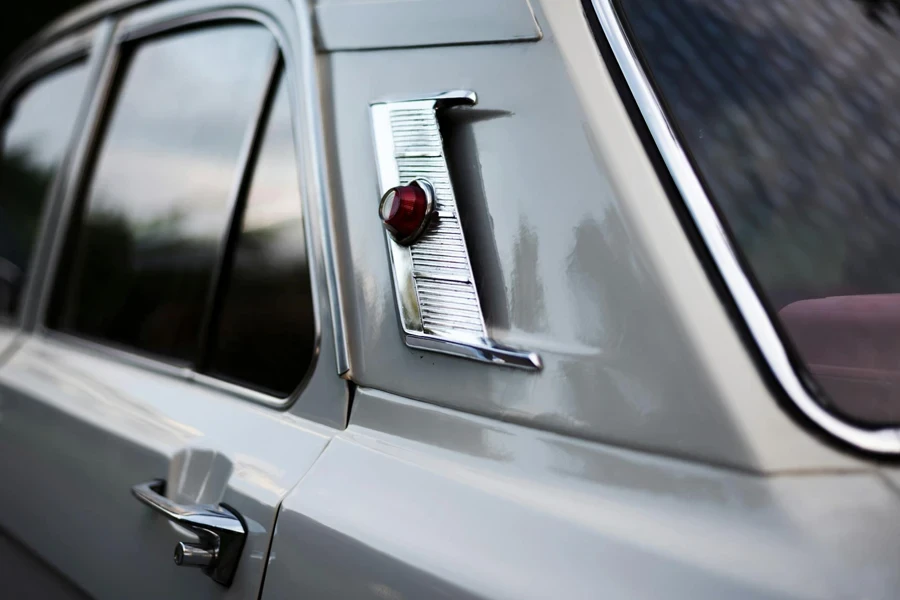Table of Contents
● Introduction
● Market overview
● Different types and their features
● Things to consider when selecting products
● Conclusion
Introduction

Car alarms are essential for vehicle security, offering protection against theft and unauthorized access. With rising car theft incidents globally, the market for car security systems is experiencing significant growth. Technological advancements have enhanced the features and effectiveness of these systems, making them indispensable for modern vehicles. Various types of car alarms cater to different security needs, providing both basic and advanced functionalities. Selecting the right car alarm system is crucial for ensuring optimal vehicle protection and peace of mind.
Market overview

Market scale and growth
The global car security system market was valued at $8.59 billion in 2022 and is projected to reach $15.22 billion by 2031, growing at a compound annual growth rate (CAGR) of 6.7% from 2023 to 2031. This growth is driven by the increasing incidence of car thefts worldwide and advancements in vehicle security technology. Various governments are implementing stringent regulations to enhance vehicle security, further propelling market expansion. Manufacturers are investing heavily to comply with these regulations and to innovate new security solutions, thereby contributing to the market’s growth.
Key advancements
Technological advancements, such as high-speed internet connectivity and the integration of global positioning systems (GPS), have significantly benefited the car security system market. The adoption of these technologies offers advanced security features, making car alarms more effective in deterring theft and unauthorized access. The market’s growth is also fueled by the mandatory incorporation of basic security measures in all vehicle segments, including lower-cost passenger cars. However, the cost of these advanced systems and potential subscription fees for certain features can pose challenges to market expansion.
Regional insights
Regionally, North America holds a significant share of the car security system market, driven by the expanding automotive industry and the high rate of auto thefts, which boosts the demand for aftermarket security installations. The Asia Pacific region is expected to witness rapid growth due to the increasing production and export of vehicles, along with a growing aftermarket industry. This regional growth is supported by rising consumer awareness and the adoption of advanced vehicle security systems.
Different types and their features

Active car alarms
Active car alarms engage when an unauthorized attempt is made to access the vehicle, such as opening the door, trunk, or hood. These systems typically use magnetic or proximity sensors to detect breaches. The alarm is manually activated using a key fob or remote control, and once triggered, it can emit sirens exceeding 120 decibels and flashing lights to deter thieves and attract attention. Some models also include features like ignition cut-off, preventing the engine from starting.
Passive car alarms
Passive car alarms automatically arm themselves when the ignition is turned off and the vehicle is locked. These systems often incorporate immobilizers that disable the vehicle’s ignition system, making it impossible to start the engine without the proper key or remote. They utilize a combination of sensors, including door, hood, and trunk sensors, to monitor unauthorized access. Passive alarms provide a seamless security solution by ensuring the system is always activated without requiring user intervention.
Two-way car alarms
Two-way car alarms offer real-time communication between the vehicle and the owner. These systems use RF (radio frequency) technology to transmit data back and forth. The remote control typically features an LCD screen that displays the vehicle’s status, such as whether the alarm is armed or disarmed, and alerts the owner if the alarm is triggered. Advanced models can also send notifications to the owner’s smartphone, providing updates on vehicle status and allowing remote control functions like locking/unlocking doors or activating the alarm.
GPS car alarms
GPS car alarms integrate GPS technology to provide location tracking and real-time alerts. These systems use a GPS receiver to monitor the vehicle’s position and can send location data to the owner’s smartphone or a central monitoring station. If the vehicle is accessed without authorization, an alert is sent immediately. Some systems include geo-fencing features, which notify the owner if the vehicle moves outside a predefined area, enhancing security and aiding in theft recovery.
Shock sensor car alarms
Shock sensor car alarms are equipped with accelerometers or piezoelectric sensors that detect vibrations or impacts on the vehicle. These sensors measure the force and direction of a shock to determine if it’s a potential threat, such as an attempted break-in or vandalism. When an impact is detected, the system triggers the alarm. Advanced shock sensors can differentiate between minor disturbances, like a passing truck, and significant impacts, reducing false alarms.
Remote start car alarms
Remote start car alarms combine the functionality of a car alarm with the convenience of a remote engine start feature. These systems allow the vehicle to be started from a distance using a remote control. The remote start function is often integrated with security features like door locking, ensuring that the vehicle remains secure even when the engine is running. Some systems include temperature sensors and can automatically start the engine to maintain a comfortable interior temperature.
Tilt sensor car alarms
Tilt sensor car alarms are designed to detect changes in the vehicle’s angle, such as those caused by towing or jacking. These systems use gyroscopic sensors to monitor the tilt angle of the vehicle. If the angle changes beyond a certain threshold, indicating a potential theft attempt, the alarm is triggered. Tilt sensors are particularly effective against wheel theft and unauthorized towing.
Glass break sensor car alarms
Glass break sensor car alarms use acoustic sensors to detect the sound frequency of breaking glass. These sensors are calibrated to recognize the specific frequency range produced when glass shatters. When a break-in attempt involving window glass is detected, the alarm activates. Some advanced models use dual technology, combining acoustic and pressure sensors, to improve detection accuracy and reduce false alarms.
Things to consider when selecting products

System type
Choosing between one-way and two-way systems involves understanding their communication capabilities. One-way systems transmit signals from the remote to the vehicle but do not provide feedback, making them simpler and more cost-effective. Two-way systems use RF (radio frequency) technology to send signals both to and from the vehicle, offering real-time status updates, such as confirmation of door locks or alarm triggers. This bidirectional communication enhances security by allowing continuous monitoring of the vehicle’s status, which is crucial in high-theft areas.
Alarm features
Modern car alarms come with a variety of features that enhance both security and convenience. Remote start systems typically use secure data encryption to prevent signal interception, allowing the vehicle to be started from up to a mile away. Power door lock integration utilizes the vehicle’s central locking system, which can be controlled via the alarm remote, enhancing ease of use. Proximity sensors, using ultrasonic or microwave technology, detect movement around the vehicle and can provide warnings before a breach occurs. Impact sensors, often piezoelectric or MEMS-based, detect shocks or vibrations from attempted break-ins and trigger the alarm. Immobilizing features electronically disable the ignition system, often using transponder chips that communicate with the vehicle’s ECU to prevent unauthorized starting.
Installation and costs
Professional installation is essential to ensure that the alarm system is correctly integrated with the vehicle’s electrical system. Improper installation can lead to system failures or false alarms. Installation costs can vary based on the complexity of the system and the vehicle model. Additionally, features like GPS tracking may require a subscription fee, adding to the overall cost. These tracking systems use satellite signals to provide real-time location data, which can be critical in recovering stolen vehicles.
Usage environment
The environment where the vehicle is parked plays a significant role in determining the necessary features of a car alarm. For instance, vehicles parked in high-rise buildings or urban areas with significant electronic interference may benefit from alarms with high-frequency communication capabilities, ensuring signals are transmitted and received without disruption. Systems with an extended operating range, sometimes up to three miles, ensure that the vehicle can be controlled remotely even in challenging environments.
Additional protection
Evaluating the need for extra sensors is crucial for vehicles parked in high-risk areas or those that carry valuable items. Tilt sensors, using accelerometers or gyroscopic technology, detect changes in the vehicle’s angle, preventing theft through towing or wheel removal. Glass break sensors, utilizing acoustic sensors that recognize the frequency of breaking glass, provide an additional layer of security against smash-and-grab attacks. Advanced systems may also integrate multiple sensor types to enhance detection accuracy and reduce false alarms.
Conclusion

Selecting the right car alarm system is crucial for ensuring optimal vehicle security and peace of mind. With a variety of advanced features and technologies available, it is important to choose a system that meets specific security needs and fits the vehicle’s environment. Investing in a good quality alarm system not only protects against theft and unauthorized access but also enhances the overall safety and functionality of the vehicle.



